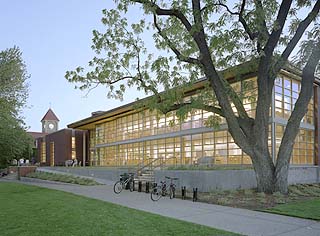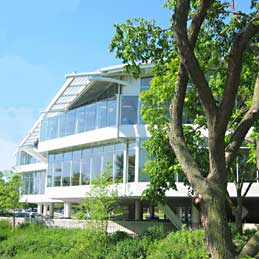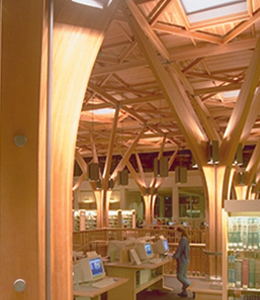Please Note2
From digitalhumanities
Contents |
[edit] How to Make the Transition
According to Tennyson, a 19th century scholar, who was apprehensive of the outburst of knowledge: "Information comes, but wisdom lingers". This sentiment can now be applied to the outburst of informationin our 21st century as "information comes, but knowledge lingers". Academic libraries face significant challenges due to the vigorous change in the ability to understand the needs, various backgrounds and interests of the patrons. This duty is becoming more challenging because of the increased flow of information and consequentially, interest. Libraries are having to deal with this influx. The fact is that faculty and students respond to new technologies at different rates. Writer, Ronald Schuchard, believes physical books will be saved due to a revolution in the special collections of libraries. He believes that the special collections of libraries have an undertaking of teaching in the university that is integral and based in research and preservation and that there is proof that the revolution is underway. Not only this, but that the actual conception of the library is drastically changing.
 scholar- 3000 AD rediscovering books
scholar- 3000 AD rediscovering books
Evidence of this change is seen in the development of libraries following a new model of information organization, one that devalues physical books. Schuchard notes the Seamus Heaney Library in Queen's University in Belfast, lacks any book by the Novel laureate, nor does it hold a work of literature. However, it does have a room of "recommended textbooks" and "offprint materials" unavailable for long-term checkout and contains more computers than books. A conglomorate library located in Dublin, at Trinity College, is replacing their existing libraries. The new library will be focused on electronic resources and IT-founded teaching as well as "automated" library and building management systems. To go along with the electronic theme of the new library, they are considering replacing the term "library" with "cybrary".
Schuchard's optimism toward the special collection revolutions of Academic libraries is backed by recent seminars for graduates and undergraduates to establish a connection with rare/special book collections. He cites programs from the libraries of UCLA and Columbia University, though it can only be assumed that if at least two notable colleges are initiating seminars then others must be as well. Libraries are working on teaching the importance of books through courses on the value of archival research, the history of the book, and to help integrate student's work into special collections. Researching an outdated manuscript through CD-ROM does not allow the viewer to note the personality of the author through detailed clues of handwriting, the corrected and uncorrected mistakes and other such ephemera which may lead one to feel closer to the text, although there is a level of value in the new preservation modern technologies offer.
[edit] Innovation Diffusion Theory
Everett M. Rogers has a theory that there ar five attributes of innovations that relate to how one acclimates to new innovations. The attributes are:
- "relative advantage" - the degree to which a new innovation is viewed as being more advanced than the present technology
- "compatability" - how the innovation relates to current values, prior experiences, and the needs of future users
- "complexity" - if the new technology is user friendly
- "trialablity" - the amount of time one can practice new skills needed for the new innovation
- "observability" - if the outcome of the innovation is perceived by its potential users
Some of the questions posed in focus groups of librarians integrating themselves into new technology are:
- "Are laggards disenchanted with all computer-based technologies or have they simply not adopted them yet?"
- "Are they also the same faculty who do not use the library at all?"
- "To what extent do innovators use library resources and services?"
- "How can librarians become more effective "change agents" in the diffusion process"
- "How effective are the methods we are using to inform our faculty about our electronic resources and services?"
There are researchers who are facilitating focus groups and compiling theories and practices on how to integrate new technologies into libraries. Online databases are well on their way to claiming domination in the library. In the coming years there will be a productive place for both computer and book users. There is no definitive path one must choose such as deciding to be a Luddite or a cyborg. It is important to ask oneself questions such as what these focus groups are aiming toward in order to figure out the place for technology in your community's or college's library.
[edit] Here's a few digital humanities organizations:
- Association for Literary and Linguistic Computing [1]
- The Association for Computers and the Humanities [2]
- Association for History and Computing [3]
- National Initiative for a Networked Cultural Heritage [4]
- Canadian Society for Digital Humanities [5]
- Alliance of Digital Humanities Organizations [6]
- Umbrella organization for the ach, allc, cch will have a new open access, peer-reviewed journal [7]
[edit] Here's a few digital archive sites for you
- Electronic Text Center: 10,000 English literature texts included in a 70,000 text paced collection, including history, literature, philosophy, religion, history of science, and the languages: Latin, Apache, Japanese, and Chinese [8]
- American Memory- at Library of Congress including "two examples of being An American Time Capsule: Three Centuries of Broadsides and Other Printed Ephemera [9]
- American Notes:Travels In America, 1750-1920 [10]
- Write American Fiction, 1851-1875 [11]
- The William Blake Archive [12]
- The Best History Sites [13]
- Language and Linguistics [14]
- Religious Studies Web Guide [15]
[edit] Library Aesthetics
goals of aesthetic:
- timeless design
- compatibility with future and present technology
- trend library aesthetics moving from "boxey 1960's and 70s no frill" to natural light and high tech user friendly structures
 Penrose Memorial Library at Whitman
Penrose Memorial Library at Whitman
[edit] SOURCES
- Mattison, David. "The Digital Humanities Revolution" Searcher; Issue 5 (2006) p25-34
- Tonkery, Dan. "Rethinking the Role of the Subscription Agent in the Transition from Print to Digital Collections" Publishing *Research Quarterly; Winter (2003) p34-55
- Kram, Lorraine. "Why continue to be a Depository Library if it is all on the Internet anyway?" Government Information Quarterly; Vol. 15 Issue 1, (1998) 15p
- Schuchard, Ronald. "Excavating the Imagination; Archival Research and the Digital Revolution" Libraries and Culture, Vol. 37, No. 1 (2002)
- Starkweather, Wendy M. "Faculty Response to Library Technology: Insights on Attitudes" Library Trends; Spring, Issue 4, p640 (1999)
- Harrington, Drew. "Six Trends in Library Design" Library Journal Issue 20, p12 (2001)



